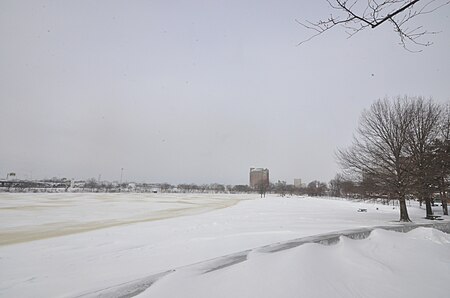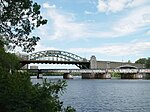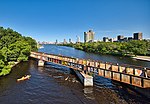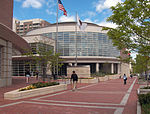Magazine Beach

Magazine Beach is an American riverside park in Cambridge, Massachusetts. It is located on the left bank of the Charles River, across Memorial Drive from Cambridgeport, and opposite Agganis Arena and other Boston University facilities on the far bank. Magazine Beach is Cambridge's second largest park, being about 15 acres (6.1 ha) stretching along the river from Pleasant Street to the BU Bridge. The park includes a free outdoor swimming pool (Veteran's Memorial Pool) as well as ball fields, exercise equipment, picnic areas, and other typical urban park features. The Paul Dudley White Bike Path runs through the park. The park's namesake, a gunpowder magazine from 1818, is in the park. It is the oldest building in the Charles River Reservation. There was a swimming beach at the park in the early and mid 20th century, attracting about 60,000 swimmers in a season, but swimming in the Charles River became dangerous due to pollution, and was forbidden in 1949.
Excerpt from the Wikipedia article Magazine Beach (License: CC BY-SA 3.0, Authors, Images).Magazine Beach
Dr. Paul Dudley White Path, Cambridge Cambridgeport
Geographical coordinates (GPS) Address Nearby Places Show on map
Geographical coordinates (GPS)
| Latitude | Longitude |
|---|---|
| N 42.355027777778 ° | E -71.113611111111 ° |
Address
Dr. Paul Dudley White Path
02215 Cambridge, Cambridgeport
Massachusetts, United States
Open on Google Maps









